Payhip is a platform for selling digital downloads. But is it the right ecommerce platform for you?
I've been using Payhip to sell digital products for a few years now and it's one of my top recommended platforms to sell digital goods for beginner bloggers and I thought I'd write an in-depth Payhip review.
Find out what I really think about Payhip, all the pros and cons and who it's for in this up-to-date Payhip review.
More...
[Disclaimer: Some links in this post contain affiliate links. This means I get a commission if you purchase the product through my link at no extra cost to you. As an Amazon Affiliate I earn from qualifying purchases.]
What is Payhip?
Payhip is the easiest ecommerce platform you can use to sell your digital goods online without having to create your own storefront and deal with payment processing and all the more complicated technical aspects of selling products online.
Is Payhip legit?
Yes, Payhip is a legitimate business and they've been helping creators sell digital goods for a few years now.
I've used it for years myself and never had any issues.
Who is Payhip for?
Payhip is for anyone who wants to sell digital products online, to be honest, but I think it's perfect for:
- Beginner bloggers with a small audience.
- Entrepreneurs who want to try their hand at creating and selling digital products online without having to commit to paying a monthly fee.
- Bloggers and creators who are intimidated by all the technology involved in creating and selling digital goods.
If you're based in Europe and/or selling products to EU customers, Payhip handles EU VAT for you.
How does Payhip work?
Payhip is super easy to use to begin with and you don't even need to have your own website.
But there are 3 different ways you can use Payhip to sell your digital products.
Selling Digital Products From Payhip
When you have your digital product ready, you upload it, set a price and create a simple landing page with an image or two, a brief description of your product and you're ready to sell it.
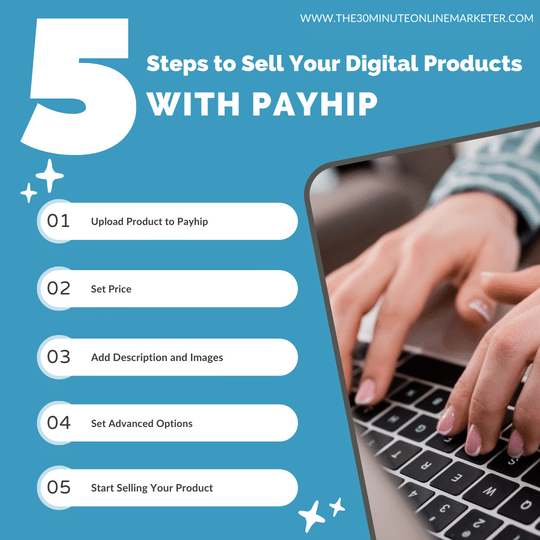
Then you send your customers to the landing page, you've created for your product and they can buy it directly from there.
Selling Digital Products With Payhip From your website.
If you have a website and want to have more control over sales pages and how they're presented, you can link your Buttons and Calls to Action to Payhip's checkout.
This is a bit more complicated, but not too much.
This way, you keep your sales pages and your Payhip's Shop separate.
setting up a shop on your website using Payhip
If you're planning on creating lots of different products and want to have a Shop on your website's domain, you can now use Payhip to do it.
For this, you'll have to connect a domain or subdomain to Payhip.
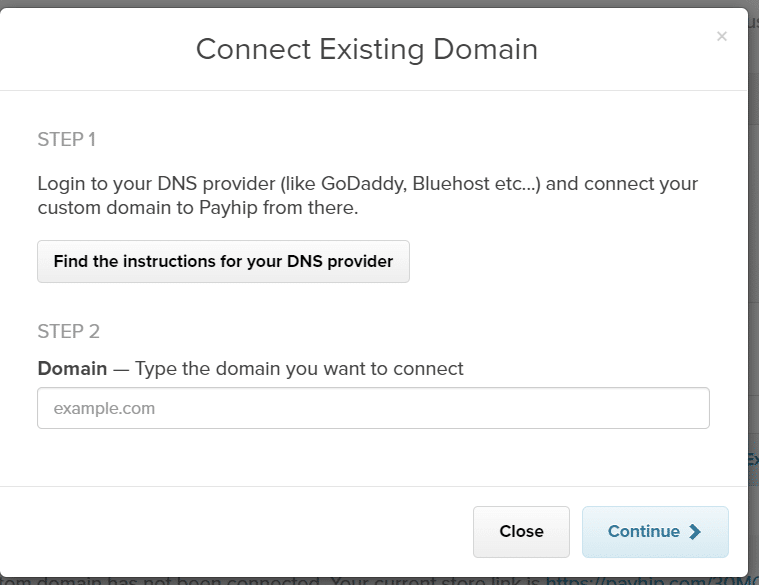
But this is a bit more complicated and I think if you're a beginner and don't have many products you can leave this for later.
What can you sell on Payhip?
For this Payhip review, I'm focusing on using Payhip to sell digital products but I will also go over some of the things you need to know if you want to use it to sell coaching products and memberships.
I won't deal with selling physical products through Payhip, though.

With Payhip you can sell almost anything that can be saved as a file.
I love using Payhip to sell ebooks, but you can also sell videos, software, sound files, etc.
Here are some fantastic digital product ideas you can create if you need some help figuring out what to sell online.
And now you can also sell online courses through Payhip, which is great! But I'll tell you more about it a bit further down.
How do customers pay on Payhip?
It's all very straightforward.
When somebody buys a product from you, your customers can pay using their Paypal account or their preferred card, as they would if they were shopping on any online store.
How do you get your money?
If what you want is an easy way to sell digital products, you can connect Payhip to Paypal or Stripe.
Every time somebody buys a digital product through Payhip, you receive an email telling you you've sold an item and you get your payment paid into Paypal instantly.
No need to wait until the end of the month or anything like that.
Payhip Review: Features
If you're reading my Payhip review you're probably wondering what are Payhip's best features and why they should matter to you, so I'm going to go over some of my favourite Payhip features and why I love them in this section of my review.
Some of the features are brand new, so I haven't used them yet, but I'll still tell you what I think about them.
User Experience
Getting started with Payhip is super easy to do and quite intuitive. If you look at the menu, it's easy to guess where everything is.
To start with Payhip you need an email address, a password and a payment service. You can use Paypal to get started and wait to set up Stripe later.
Now, I'm assuming you've already created your first digital product, but if you haven't got one yet, here's how to create your first digital product.
Anyway, once you've got your file for your digital product, creating a product in Payhip is super easy to do and quite intuitive, so you don't have to spend ages trying to find where things are or which tab you need to click on to do something.
It's so easy, that you can set your first product for sale in 5 minutes (provided you've already got your images and a brief description for your product).
Just fill in the details Payhip asks you to add every time you Add a new digital product. It's all very straightforward:
And from the customer's point of view?
Buying products with Payhip is also what you would expect.
It's a simple process, whether you send people to the Shop, a sales page for a product, or to the checkout, which looks very pretty, to be honest.
So I don't think there's anything that will put people off buying your products from there.
Adding Blog Posts to Payhip
This is something that didn't exist when I started using Payhip, but you can create blog posts and publish them in you Payhip Store.
It's not like publishing a blog post in WordPress, though.
It's a lot simpler and it's not for you if you already have a blog or you want to take blogging seriously.
But if all you want to do is sell your products, you could add some news articles, or create a few blog posts about the products and how to use them, so people can see them from your Store.
But, as I said, this isn't what you should do if you're serious about blogging and want more than a side hustle.
The Store Builder
As you saw in the video, all you need to add your first digital product to Payhip is the product, a description and a few images or video.
This is all very simple, so it's great for beginners or if you want to set something up very quickly.
But one of the main criticisms I had about Payhip when I started using it was that this was too simple so I couldn't do what I wanted/needed to make my sales pages pretty and give all the information I wanted to give about the product.
I know you can now use the Store Builder to add more sections to your products and give your customers more information.
But I still think you'll sell more products if you use Bluchic's landing pages templates to create your pages and then connect the button to Payhip's checkout.
Because you can do things like add little tripwires to your website and have evergreen sales campaigns on your website.
So you can make money with your blog all the time, not only when you're doing a launch or a flash sale.

I'd also wait until you have 3-5 products before you decide to mess up too much with Payhip's Store Front and go all in customising it.
Using the Store Builder is perhaps the hardest bit to do for people who aren't used to designing landing pages and customising WordPress Themes.
But it's still simple enough if you go bit by bit and customise each section at a time. For example this video shows how to customise fonts for the buttons.
However, I've recently been experimenting with it and I've noticed some of the changes don't seem to get saved.
But since it's not super important to me and I don't usually send people to the Store, I sort of left it.
Two welcome additions to Payhip's Store Builder
- One problem you can have when you're selling digital products through an ecommerce marketplace is that it's not easy to communicate with your customers because you may not have access to notifications and popups.
But now you can.
Because you can use Announcements or create blog posts to add some news about what you're doing or what's coming.
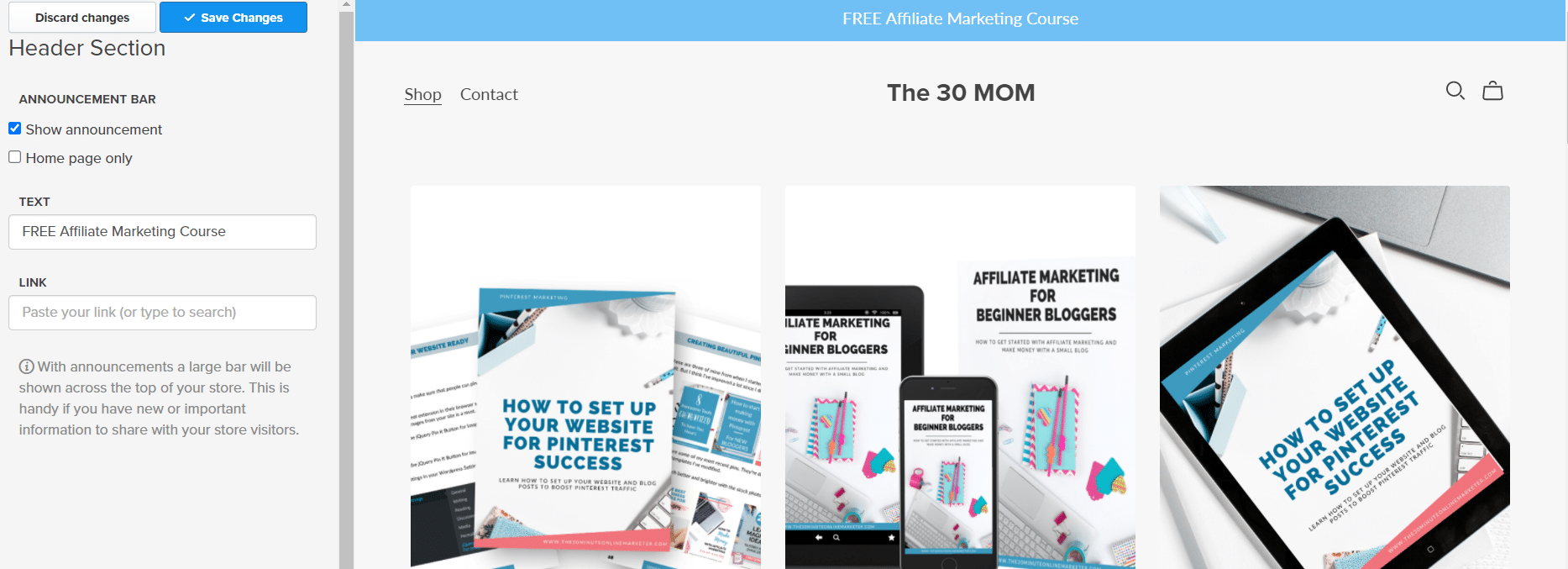
- The second thing is that you usually can't get collect email addresses from people who visit your store but don't buy anything.
And even when they buy, they still might not consent to you sending them emails.
But you can now used the Announcement Bar or the Footer to add a link to a FREEBIE they can download in exchange for their email address.
And this means you'll have more chances of selling products to them once they're in your email list.
EU VAT Handling
This is a feature that gives you piece of mind.
I've worked with platforms (ecommerce and course platforms) where you don't get EU VAT handling and it's up to you to work it out either by paying a service (and they're not cheap) or working things out yourself every time somebody from the EU gets a product from you.
And it's just not worth the hassle.
But Payhip does everything for you. So you can set up the price of your product and forget about EU VAT.
PDF stamping
If you're worried about people being able to copy your PDF files and distributing them themselves, Payhip has you covered:
But How does Payhip protect your digital products from being pirated?
Go to the Advanced Settings on your account and tick the Protect your PDF files option, this will stamp your files with the buyer's email on each page of your PDF.
Go to your Account and click on Advanced Settings to do it.
And you can also set a maximum number of download attempts for each file, too.
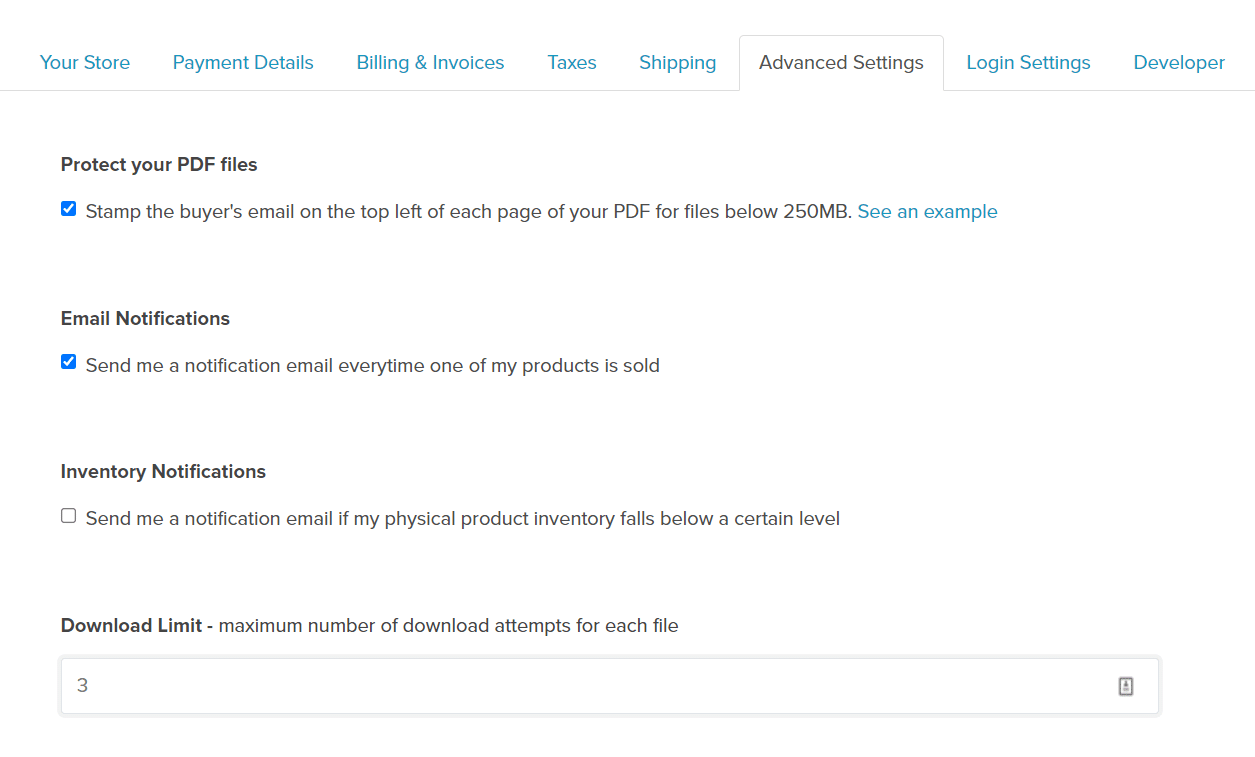
And if you're selling some software, Payhip will manage licenses as well.
payhip's marketing Features
Being able to access ALL of Payhip's marketing features even when you're on the Basic Plan is my top reason to recommend Payhip for beginners.
Why?
The simplest reason is that if you want to maximise how much money you make from the start, you need to have access to things like coupons, upsells and cross-selling.
Because you can potentially sell two products instead of one every time you sell something, so you make more money.
But also because you can have tripwires and evergreen funnels to help you create a passive income stream or make flash sales easily when you need to boost your income quickly.
What are Payhip's Marketing features?
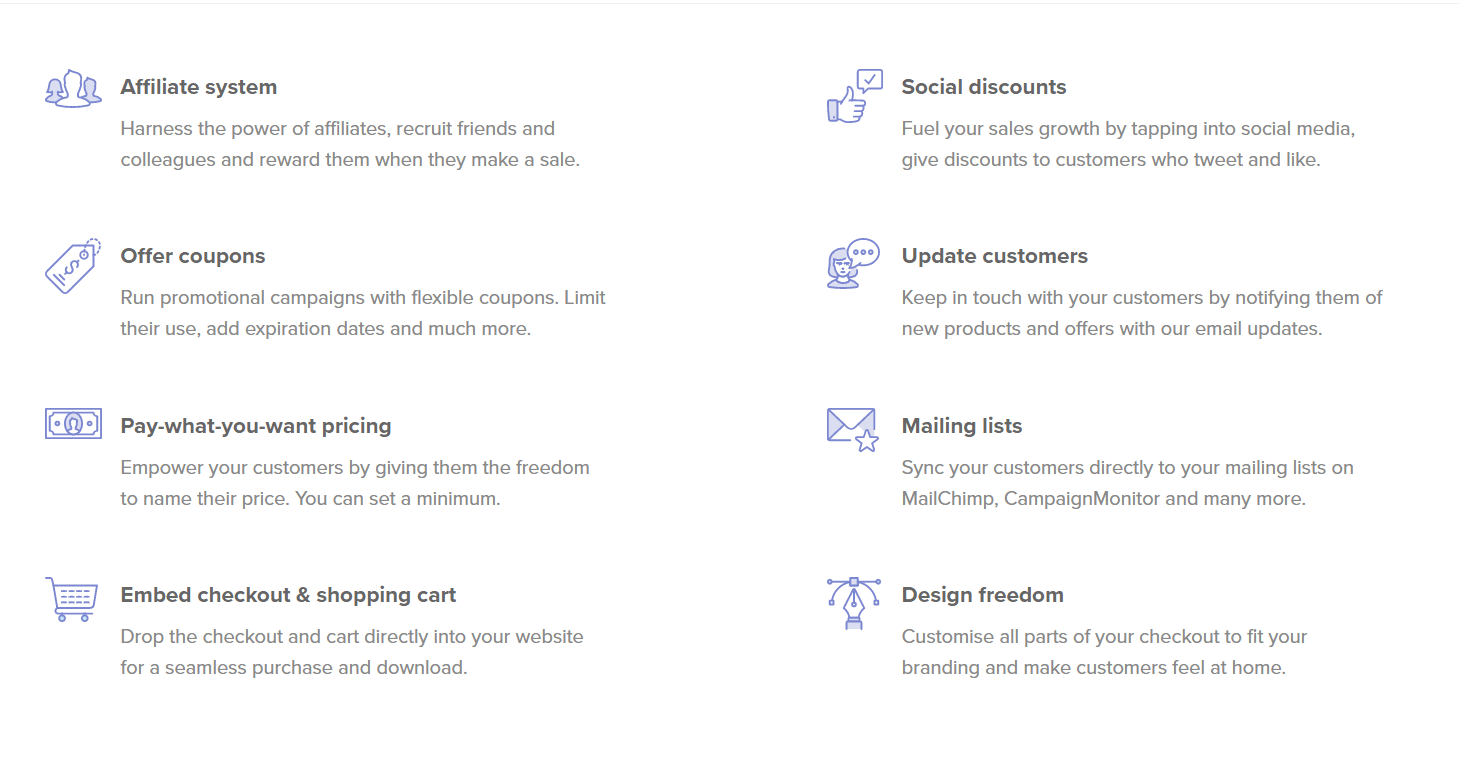
Offer coupons
My favourite way of using offer or voucher coupons is when there's a launch sale or a special event like Black Friday.
With Payhip you can set up expiration dates for your coupons or limit the number of coupons you use.
And this helps you make more sales because it creates urgency and scarcity when you're pre-selling a new product, launching at an early bird price or having a flash sale.
Social discounts
Not sure these work for all niches, but they're worth a try.
You can set up a discount for people who share your product on social media. So they get a discount and you get a social share.
Referral system
You can also set a referral system so when people refer a product and somebody buys it through their link, they both get a discount. But again, this will not be effective for all niches.
Cross-selling and upgrades
Cross-selling and upgrades is one possible way to boost your income every time you sell a product.
You can set things up so people at the check out will be offered a related product at a discounted price.
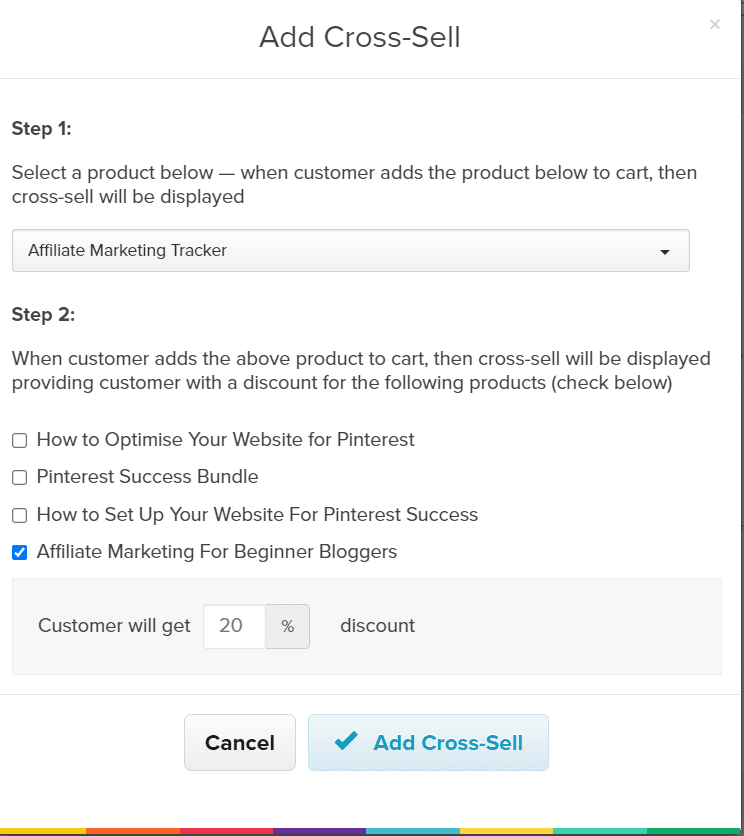
Does this work?
Yes. It does work, provided you have products that are related to or complement each other.
But this only works if you send customers directly to the Payhip landing pages , not when you create a landing page on your own website and connect it to the checkout from there.
Pay what you want pricing
I've seen Pay what you want pricing work really well in places like LeanPub, though they set up a minimum price, which can start at 0 and a suggested price. It also allows customers to pay more if they want, which also happens.
Which can be a bit surprising for the creators, to be honest.
The thing is that pricing things can be tricky.
You don't want to sell things too cheap because you want to make money and don't want to devalue your work, but what if you're leaving money on the table because you priced it wrong for your audience?
PRICING TIP:
Think of a minimum price you'd be happy to get for a product (don't forget to take into account taxes and commissions) if you were to have a sale.
Then set it as the price to Pay What You Want.
Then offer it to your email list. You might be surprised with the results.
Affiliate system
Creating a simple affiliate program with Payhip is very easy.
There are lots of bloggers and influencers looking for products to promote to their audience and you can write to them, offer them a FREE copy of your product and ask them if they'd like to become your affiliates.
Or you can email your customers directly and invite them to be your affiliates.
The good thing about this is that it's very easy to set up.
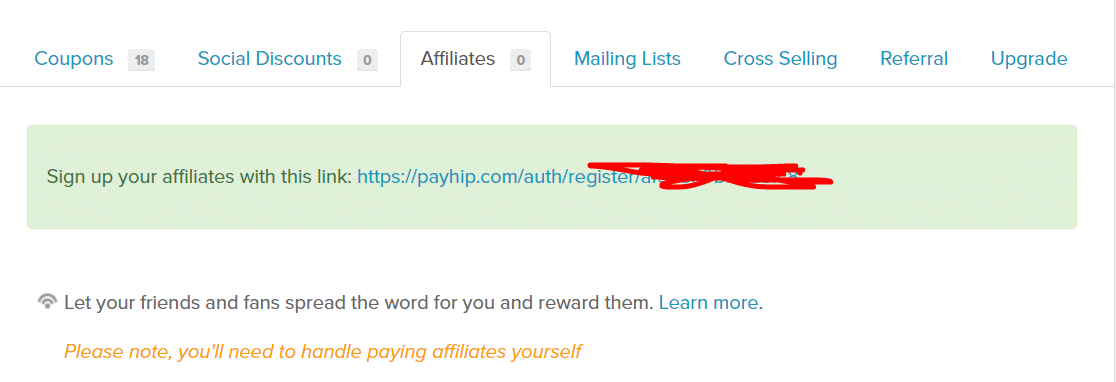
But you'll have to pay affiliates yourself, so it's not automatic, but you will get a report every month and can pay your affiliates through Paypal.
Customer reviews
This is something I haven't tried out yet because it's one of the newest features.
But it's good to have reviews for your prospective customers to see on the sales pages as well as being able to take screenshots and use them on social media when you're promoting your products.
So make sure you enable customer reviews on all your products.
Connecting to your email service provider
Payhip keeps details about your buyers so you can email them if you update a product, for example. And you can also add them to your email list to build a relationship with them.
But it's not automatic, your customers have to consent by ticking a box.
What happens if you don't have an email list?
As I mentioned above, you can have a limited amount of communication with your buyers through Payhip, but I must say that having an email list is essential for anybody wanting to have an online business.
I use ConvertKit with my Payhip ebooks and it works great, so I'd recommend using ConvertKit as well, cos they also have a FREE plan.
Analytics
Payhip analytics are simple enough to understand. You'll get views, conversion rates and it also tells you where the traffic is coming from.
Payhip Review: Pricing
So how much does it cost to use Payhip?
Well, it depends on what Pricing Plan you're on, so I'm going to go over and explain how they work.
Payhip Basic Plan
One of the best things about using Payhip is that you can start using it for FREE, so no need to pay monthly fees when you're starting out. They only charge you a commission of 5% every time you make a sale.

Payhip Standard Plan
With Payhip's Standard Plan, you pay $29.00 a month + a 2% commission every time somebody buys one of your products.
When you compare it to other ecommerce platforms, it does look like it's a lot more expensive. For instance, the cheapest plan with Sendowl is only $15 a month, but there are no limitations at all when you're with Payhip.
So in my opinion, if you do the maths and it makes sense for you to pay the $29 dollars a month, go for it.
Payhip Professional Plan
This is the most expensive plan and it costs $99 a month but you don't have to pay transaction fees. It does sound like a lot, so you have to work out if you're already paying $99 in commissions to Payhip for this to be worth it.
To be honest, by the time you get to this stage you might need a different tool.
But it will also depend on how you price your products or your membership.
Do I need to pay Paypal or Stripe fees?
Yes, you still have to pay these, so don't forget about them when you're working out how much you're going to charge for your digital products.
payhip review: Selling Online Courses with Payhip
Finally, Payhip now does Online Courses, which is absolutely fantastic, as you still get all the advantages of using Payhip.
In the past, I've tried using other online course platforms and if you're only starting out, you're going to find that in most cases, you have a monthly fee to pay for the platform because their free plan is so limited.
And you don't even know if you're going to have many people paying for your courses or how frequent sales of your online courses are going to be.
So you end up paying every month.
And, that's OK if you're making enough sales, but one of the things I don't like about other platforms is that there are different pricing plans that affect the features you're going to be able to use.
So if you want to make a course invisible, for example, so only your subscribers can get to it, you have to get the most expensive plan (and the difference is quite large, usually).
Or if you want to be able to use discounts, you'll also have to get the most expensive plan.
So being able to do all this with Payhip and get started for FREE is awesome.
The Online Course Builder or Curriculum section
It all looks pretty basic, but it's so simple, it's super easy to get started.
You can add sections to your Course Outline, and then add lessons to each section.
And when you add a lesson, you decide on the type of lesson you want, text, video, quiz, survey...
And then you add your content and click on Preview to see what it looks like
A NOTE ABOUT VIDEO CONTENT
IF YOU WANT TO USE PAYHIP TO HOST YOUR COURSE VIDEOS, THERE'S A COST OF $5 A MONTH TO DO IT.
But if you already have Wistia or Vimeo or a similar tool to stream your videos, you have the option to embed them in your lessons, so you don't have to pay extra.
And if you want to do it completely for FREE, you can embed Youtube videos as well.
Features I like about Payhip's course builder
There are a few things I like:
Sales Pages
The storefront builder, which you use to create sales pages for your products can also be used to create your online course sales page and thank you page.
So it's all quite easy to use, plus they look good.
And you can start with a basic sales page and add more sections as you get testimonials, or you add more information.
The checkout page cannot be customised, though.

Drip feature
You can drip the content in your course so it's not all available in one go, if you're doing a live course or a challenge.
Pricing Plans
You can apply different plans: FREE, One time price, or set up a payment plan.
Being able to set up payment plans gives you more flexibility when and if you want to create a signature course, though I'd recommend you start with a small course first. They're easier to sell and quicker to create.
Certificate Creation
This sounds daft, but I really like that I can create a certificate in Payhip and customise it to my brand.
All I need to do is add a logo and upload a pretty background or use the ones already provided for me and it's done.

Control who views the course
You can make it visible to you, to everybody that lands on your store or just to people who have a direct link, this works well for challenges, if you want to offer courses as part of a membership or want to hide a course for whatever reason.
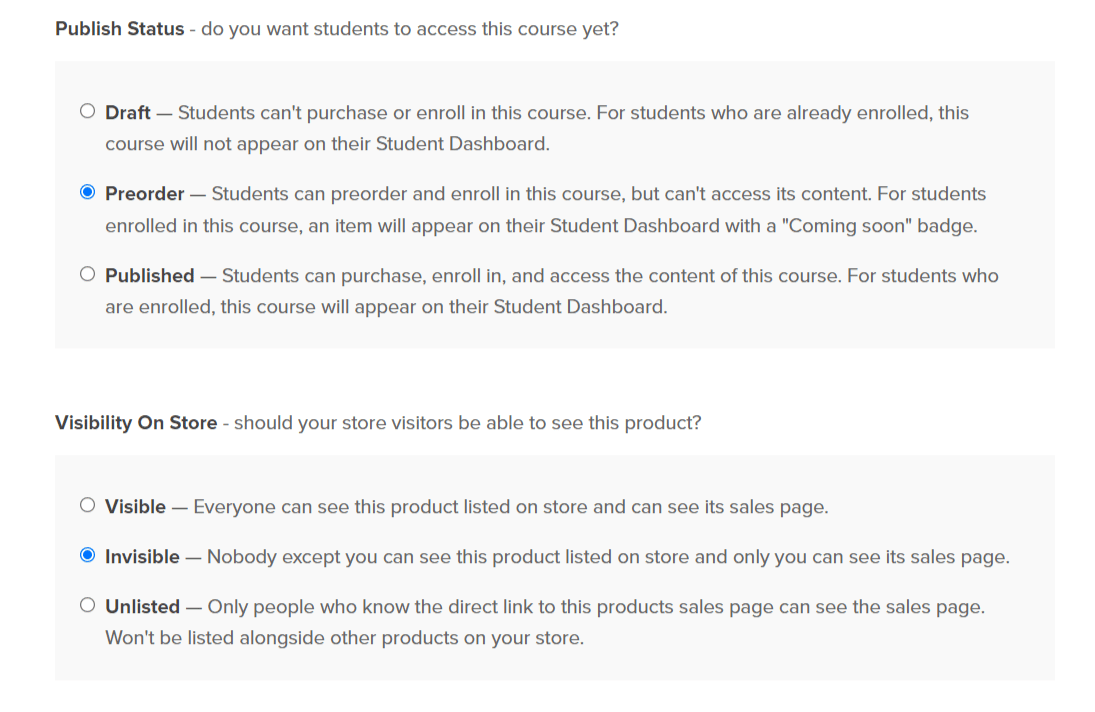
Publish Status
I love that you have this option, it makes things very easy for your to promote your course and get people enrolling even before you've finished creating it.
And, of course, you can also set discount codes for the courses if you're pre-selling or if you're having a sale, similarly to what you do when you're selling digital downloads.
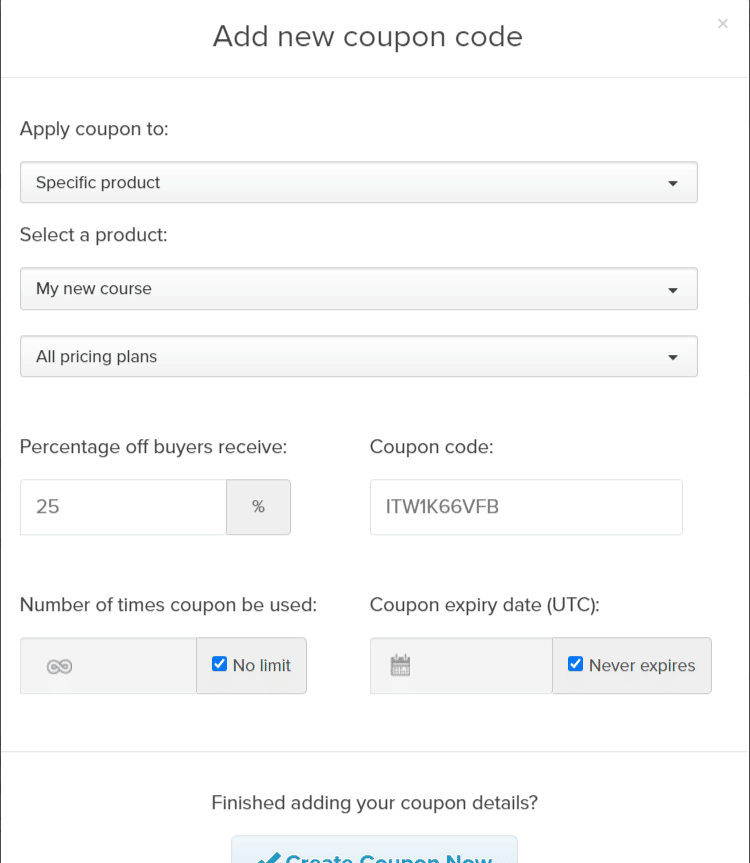
The one thing you can't do:
From what I've seen so far, you can't do cross selling or upselling for courses yet, so if you want to offer a discounted product to people in your course, you can't do that automatically.
But you can always add a note in your course giving your students a COUPON CODE or take them directly to the checkout page (with the discount already applied) for that product.
Overall impression of the course builder
I like that it's simple to use, and it has the main features you need to successfully sell online courses when you're starting out.
The backend might not look as sophisticated as some other online platforms, but, when it comes to it, it's all about the student experience and I think from that point of view, it works well.
Selling Memberships with Payhip
I have only used Payhip to sell digital products, but you can also use it to sell memberships to your audience. And it's also quite easy to set up, but you'll have to sig up to Stripe if you're not already using it.
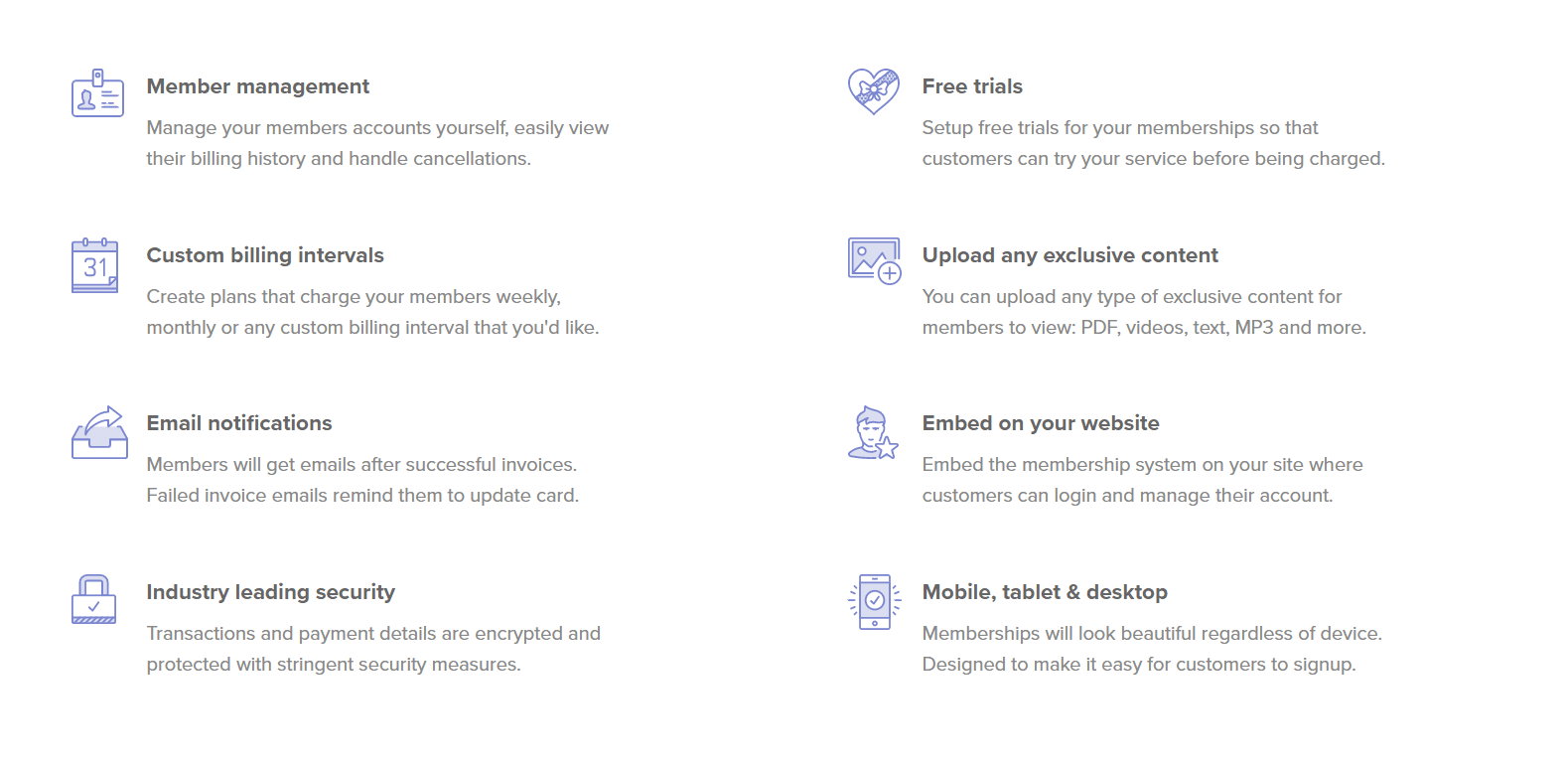
What kind of things can you sell as part of a membership with Payhip?
Setting up a membership means that you have to commit to creating the content your subscribers expect and it may seem a bit risky to do it when you don't know if it's going to work or if you're going to have enough people subscribing.
But you Payhip allows you to give this a try without having to pay for Membership plugins and apps.
I think it can work well if you have a simple product or membership concept.
Basically, if you want to offer digital products like templates, email copy, sound files, printables and similar things, I think Payhip will work well.
But if you're thinking of having a membership to sell video trainings and online courses, you're probably going to need a robust online course management tool like Podia.
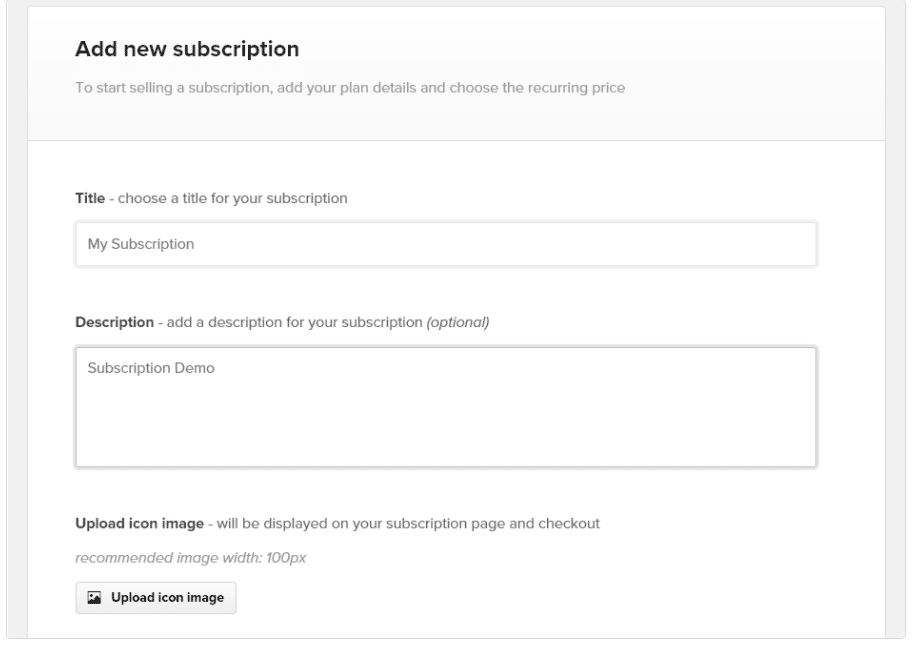
Because, unfortunately, Payhip does not host your videos.
You can use videos as a digital products but people don't watch them from Payhip, they download them.
I've done this with some masterclasses, but it's not something I'd recommend you do as a norm.
Partly because Payhip is not an online course management system, and you can't give people the student experience, but also because you have no control over your videos once they've been downloaded.
setting up membership plans
One thing I like about this is that you can set up different plans for your memberships.
So you could start with one plan and keep things very simple and then build things up so you can offer one or two more levels with a little extra added to each plan as you grow.
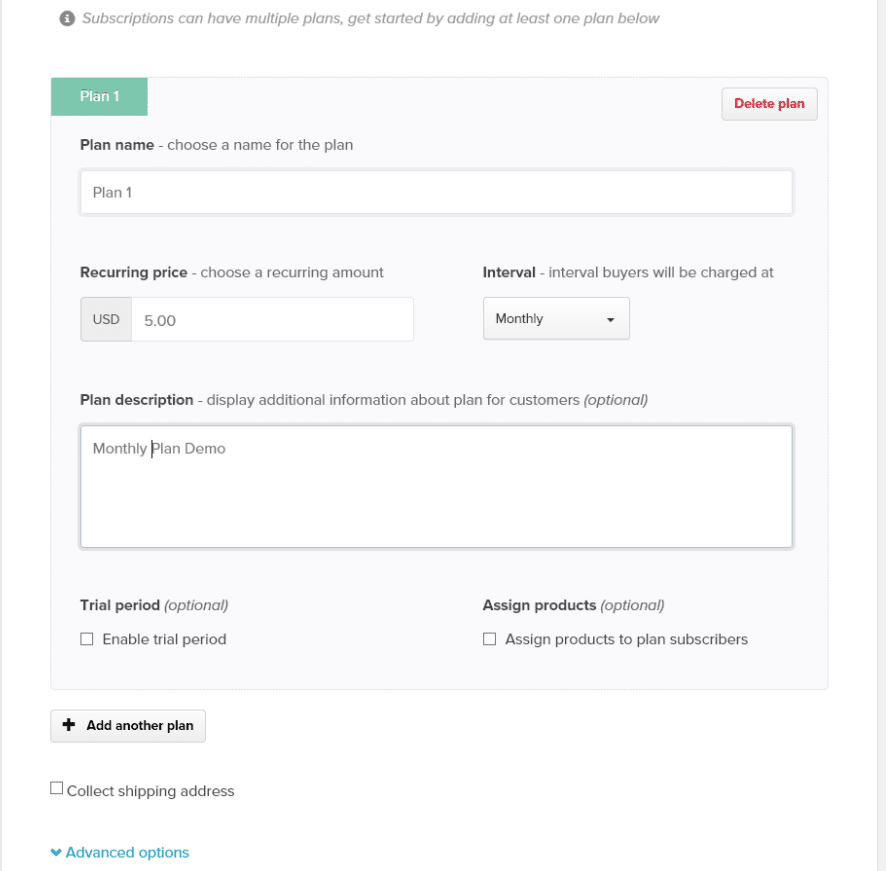
But I think there's a limit to what you can do with memberships because you cannot use Payhip to deliver or host everything you might need, such as lessons, chats, etc.
So you'll need to be very clear about what you can offer and consider other tools you might need to do what you want. Will a Facebook group do? Or do you need more?
Selling Coaching with Payhip
I know this is not actually selling a product, but one of the ways to make money online is to get paid for your skills and your knowledge by coaching other people.
And, in order to do that, you need a way to show people what you offer, collect the money, etc.
And now you can do this with Payhip too.
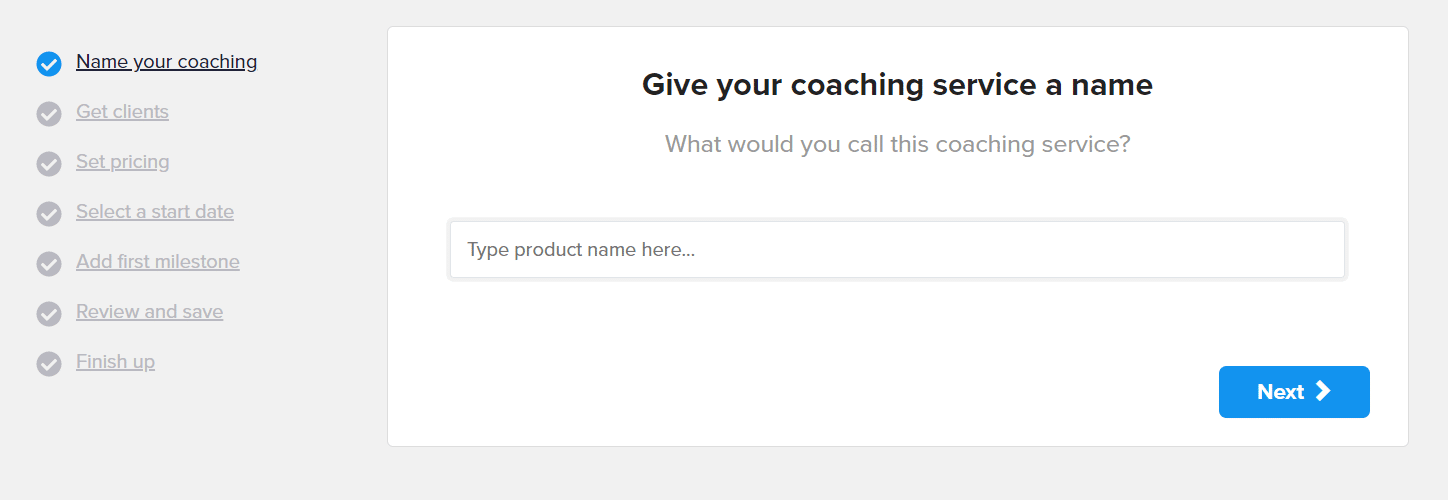
I'm not sure how everything works cos I've not tried it myself.
But, from what I could tell, it's not for one-off coaching sessions and it's more similar to a membership subscription.
It seems to me it would be much easier to set up a digital product offering one-off coaching sessions and deliver a file with instructions to schedule the coaching and so on.
Payhip Review: Pros and Cons of Using Payhip
As with any other ecommerce platform, there are pros and cons of using Payhip that you need to consider before you decide to use it, though, in this case, you don't have to worry about the cost, so you can try it out and if you don't like it, it doesn't cost you a penny.
payhip pros
Pros
payhip cons
Cons
ConClusion of my payhip review
As somebody who has used Payhip for quite a long time, I can honestly say that Payhip is a great solution for selling digital downloads and online courses for beginners bloggers and online entrepreneurs or people who aren't great with all the tech.
I know it's not perfect, but it's very easy to use and has all the features you need to help you set up and start selling your digital products quickly with or without a blog.
And once you start with Payhip, all you need to do is send plenty of traffic to your products to make sales!
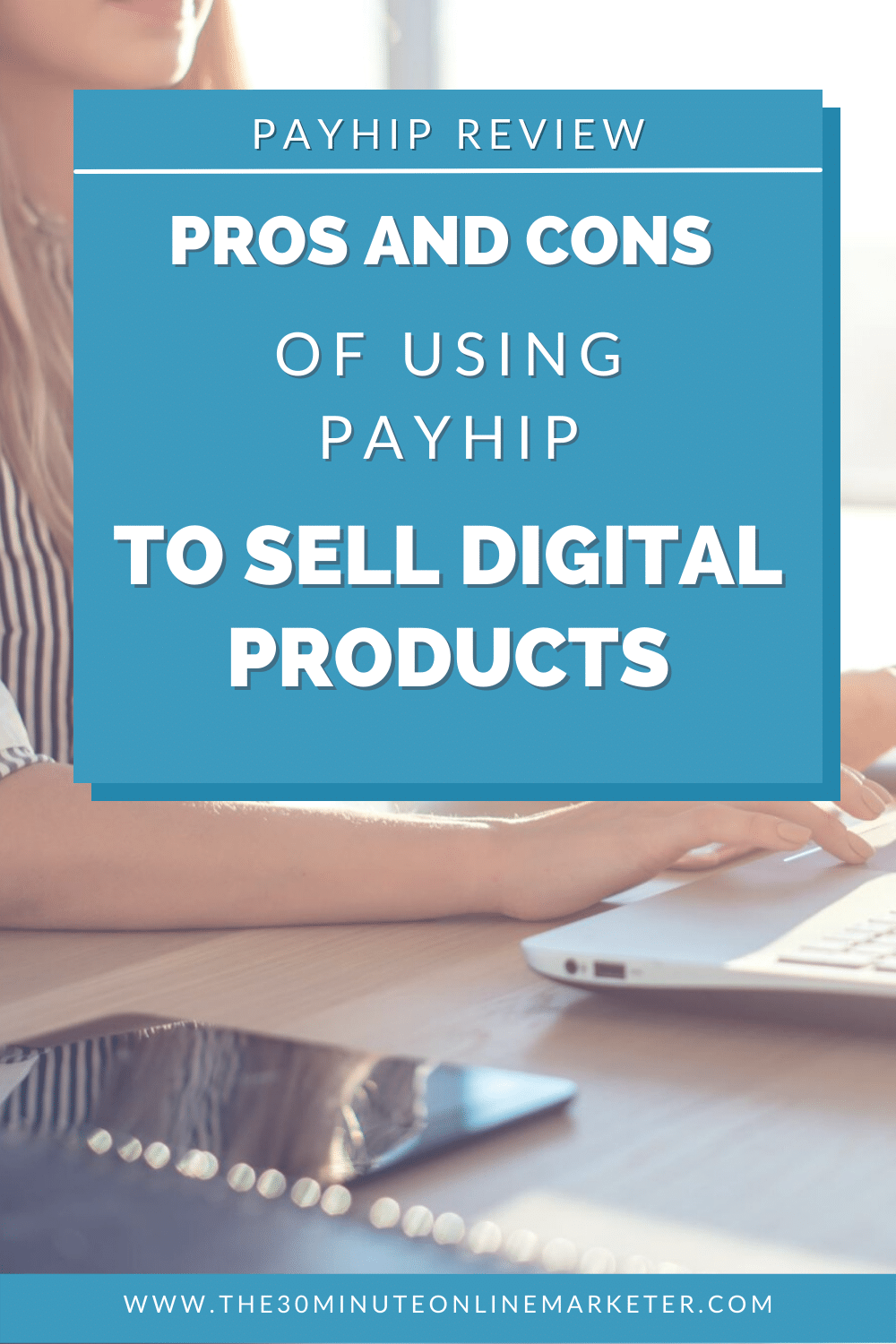
did you enjoy this post?
Please help me share it on Pinterest.
Thank you!





Really helpful information you shared. I enjoyed reading it all.
Thank you.
Thank you very much for your comment.